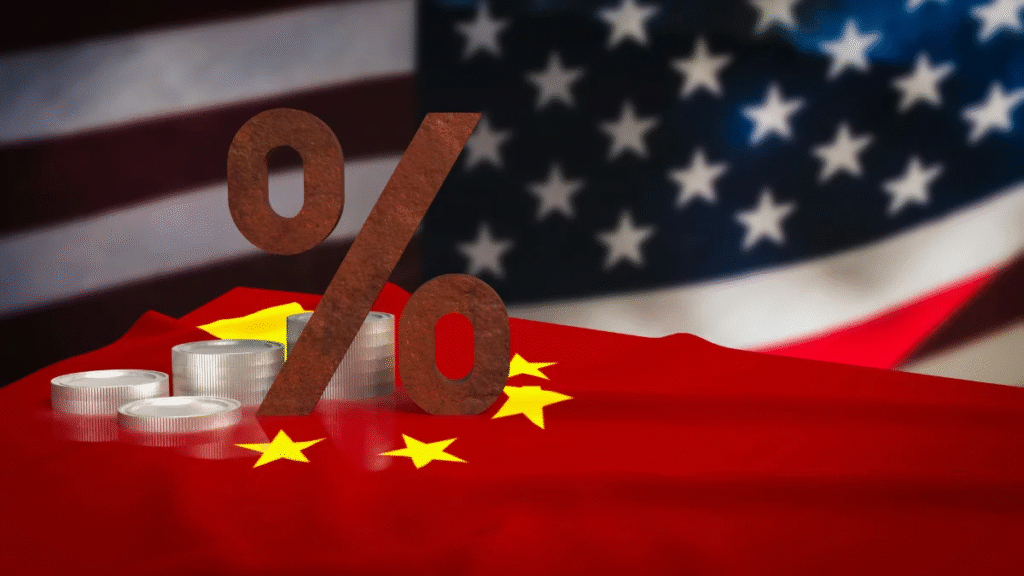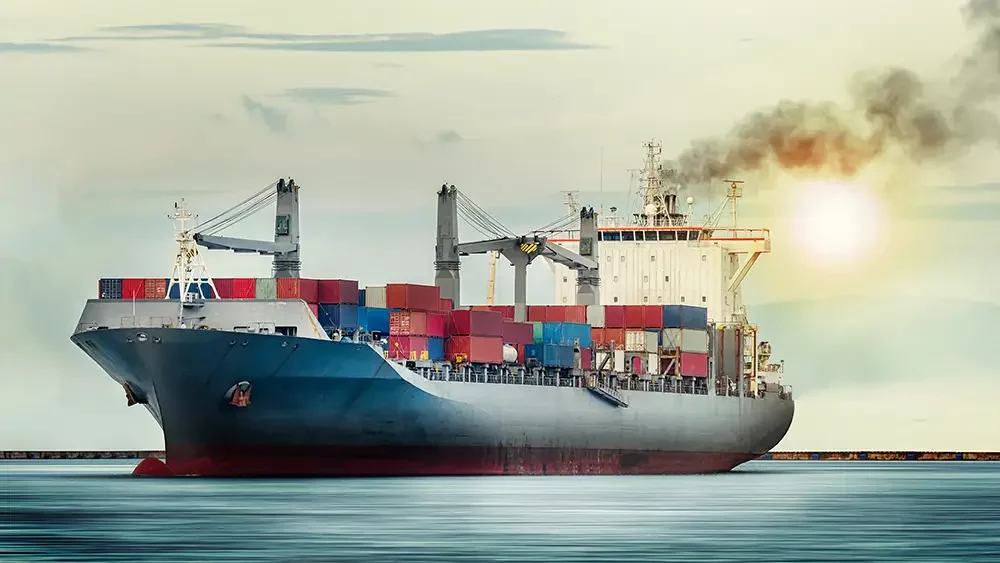China to USA shipping time isn’t what it used to be. Transit windows are shifting—sometimes by days or even weeks—thanks to tighter customs checks, rerouted sea lanes, and limited vessel space.
When your cash flow, launch date, or inventory shelf life depends on reliable delivery, even a small delay can cost more than you think.
That’s why, in 2025, knowing “how long it takes” isn’t enough. You need to know what can disrupt your shipment—and how to plan around it.
This guide will break down what’s really affecting China to USA transit time in 2025, provide up-to-date route comparisons, and show you how smart importers are building shipping strategies that absorb shocks and stay on schedule.e.
What’s Changing in 2025: 3 Big Shifts That Could Delay Your Shipment

Shipping from China to the USA has never been a straight line, but in 2025, the twists and turns are harder to predict than ever.
Whether you’re a seasoned importer or launching your first product line, you’ve probably noticed delays creeping in—even when everything looks “on time” on paper.
Here are the top three shifts making shipping timelines harder to pin down this year:
1. Stricter Customs & Documentation Scrutiny
Customs delays are no longer rare—they’re becoming routine.
In 2025, T86 enforcement, origin audits, and tariff reclassifications are increasing across key U.S. ports. What used to be a 24-hour clearance may now take 3–5 days—especially if your paperwork has even a minor mismatch.
What this means for you:
Double-check invoice details, product codes (HS), and compliance documents before booking. The fastest vessel won’t help if your shipment gets held at customs.
2. Route & Port Flow Realignments
Sea lanes may look familiar, but cargo flow has shifted.
West Coast ports like Los Angeles and Long Beach are gradually recovering, but now Gulf and East Coast ports are experiencing fresh congestion, as more importers reroute to avoid California backlogs.
At the same time, transshipment hubs in Southeast Asia are still facing container imbalances and vessel bunching, creating bottlenecks mid-route.
Pro tip:
Don’t just ask how long from China to the U.S. Ask which port? Which route?
Transit time from Ningbo to New York can be nearly double that of Shanghai to LA.
3. Capacity Crunches During Peak Season
Carrier schedules are tighter than ever.
With ocean carriers consolidating services and reducing low-volume sailings, space is once again limited—especially in Q2 and Q4.
Best practice:
Treat booking deadlines like marketing deadlines. Lock them in 2–3 weeks early, especially for holiday inventory or product launches.
Updated Shipping Time Estimates by Route & Method (2025 Edition)
Transit times in 2025 are more stable than in the past two years—but they’re far from predictable. Your actual delivery window depends not just on transit days, but also on paperwork, port traffic, and inland trucking.
Still, having a baseline is essential. Below is a breakdown of average transit times by route and shipping method, based on current GortoFreight data:
| Shipping Method | Route | Transit Time | Best For |
|---|---|---|---|
| Ocean Freight (FCL) | Shanghai → Los Angeles | 16–20 days | Bulk goods, West Coast distribution |
| Ocean Freight (FCL) | Ningbo → New York | 26–32 days | East Coast retail, Amazon FBA warehouses |
| Air Freight | Shenzhen → Chicago | 3–6 days | Urgent restock, high-value electronics |
| Express Courier (DHL/UPS/FedEx) | Guangzhou → USA (any major city) | 2–4 days | Samples, small batch eCommerce |
As timelines fluctuate, understanding the most reliable methods for Shipping goods can make a major difference in your Q2 or holiday season outcomes.
Keep in mind:
These times reflect port-to-port transit only. Add 2–5 days for origin handling, customs clearance, and last-mile delivery. Seasonal surges, port congestion, or documentation issues can extend timelines.
Which Option Fits Your Business?
- Go Ocean Freight (FCL) if you ship full pallets and want the lowest unit cost per product.
- Choose Air Freight when launching a new product or filling urgent stock gaps.
- Pick Express Courier for lightweight, high-margin items or time-sensitive samples.
Sea vs. Air in 2025: What Really Gets Your Cargo There Faster?
At first glance, the choice seems obvious: air freight is faster, sea freight is cheaper. But in 2025, when customs inspections, limited space, and unpredictable delays are part of the equation, raw speed isn’t the only factor that matters.
Air Freight: Fast in Transit, Slower in Practice
Air freight typically takes 3–6 days in the air—but that’s not the whole picture.

What can slow you down:
- Limited flight frequency from inland Chinese airports
- Longer export prep for sensitive or high-value items (e.g., batteries, branded goods)
- Increased customs inspections at U.S. arrival ports in 2025
Best for: High-value, lightweight, time-critical shipments
Tip: If you’re trying to make a product launch window, air might help—but plan for 1–2 days of possible clearance delay.
Sea Freight: Slower on Paper, Smoother in Planning
Sea freight (FCL) usually takes 16–30 days depending on the route. That sounds long—until you realize how predictable it can be.
Why it works:
- Weekly schedules with fixed sailings from major ports
- Eased congestion at LA, Long Beach, and key transshipment hubs
- Early booking guarantees space, often weeks in advance
Best for: Full container loads, restocking, long-term planning
Tip: If you can afford a few extra days, sea freight often delivers fewer surprises.
Building a Predictable Timeline in Uncertain Times
Even in 2025, you can’t control customs, weather, or vessel delays. But what you can control is how well your shipping plan absorbs those surprises.
Here’s how experienced importers stay on track—even when the world doesn’t:
1. Lock in Bookings 2–3 Weeks Ahead
Why? Because space isn’t guaranteed anymore—especially during Q2 product launches or Q4 holiday rush.
Booking early means:
- Lower rates
- More carrier options
- Higher chance of on-time departure
Tip: If your shipment must arrive in time for a campaign or trade show, treat booking as seriously as marketing deadlines.
2. Combine Fast & Slow Shipments
Not everything needs to fly.
Use air for 10–20% of your urgent goods, and sea for the rest. You’ll:
- Get key SKUs in hand quickly
- Keep freight costs under control
- Avoid complete sellouts due to ocean delays
Perfect for: Amazon sellers or brands with retail launches—get the first batch in, while the rest follows affordably.
3. Keep Buffer Inventory in Key Locations
Delays are less painful when you have 1–2 weeks of extra stock on the shelf.
Whether it’s:
- A 3PL warehouse in California
- A partner fulfillment center near your top customer base
This “safety stock” buys time when shipments stall.
Tip: Even if your next container is late, your customers won’t feel it.
4. Split Shipments When Necessary
Waiting for your full order to be ready = higher risk.
Ask your supplier to ship in two staggered batches:
- You’ll reduce single-point failure
- Start selling part of your inventory earlier
Great for: New product lines or large orders where delays = lost revenue.
5. Keep a Real Conversation Going with Your Forwarder
This is your secret weapon. Good forwarders can:
- Suggest alternate ports or routes
- Flag customs issues early
- Help you avoid known bottlenecks
Tip: Don’t treat freight as “set it and forget it.” The best timelines come from collaboration—not last-minute emails.
Frequently Asked Questions: Shipping from China to the USA
Q1: How long does sea freight take from China to the U.S. in 2025?
- Shanghai → Los Angeles: 16–20 days
- Ningbo → New York: 26–32 days
These are port-to-port estimates. Add 2–5 extra days for:
- Origin handling
- Customs clearance
- Final-mile delivery
Q2: Is air freight always faster than express couriers like DHL or FedEx?
- Air Freight: 3–6 days in transit, but may include long customs and airport handling.
- Express Courier: 2–4 days total, including last-mile delivery—but only for small, light shipments.
Q3: Will holidays delay my shipment?
Yes, major holidays can delay your shipment significantly. Best practice: Ship at least 3 weeks early during Chinese New Year (Feb), Golden Week (Oct), and U.S. Black Friday/Christmas (Nov–Dec).
Q4: I’m new to this. What’s the safest way to stay on schedule?
Three steps:
- Plan backward from your delivery deadline.
- Book early, especially during Q2 and Q4.
- Talk with your forwarder, not just once—but throughout.
Conclusion:
Reliable delivery timelines don’t happen by accident—they’re built through smart planning and informed decisions.
In 2025, with tighter customs checks and shifting cargo flows, importers need more than just transit estimates.
If you’re looking to optimize your China–USA shipping strategy, tools and insights from experienced freight partners—like those shared by GortoFreight—can be a valuable starting point.

Lexy Summer is a talented writer with a deep passion for the art of language and storytelling. With a background in editing and content creation, Lexy has honed her skills in crafting clear, engaging, and grammatically flawless writing.



